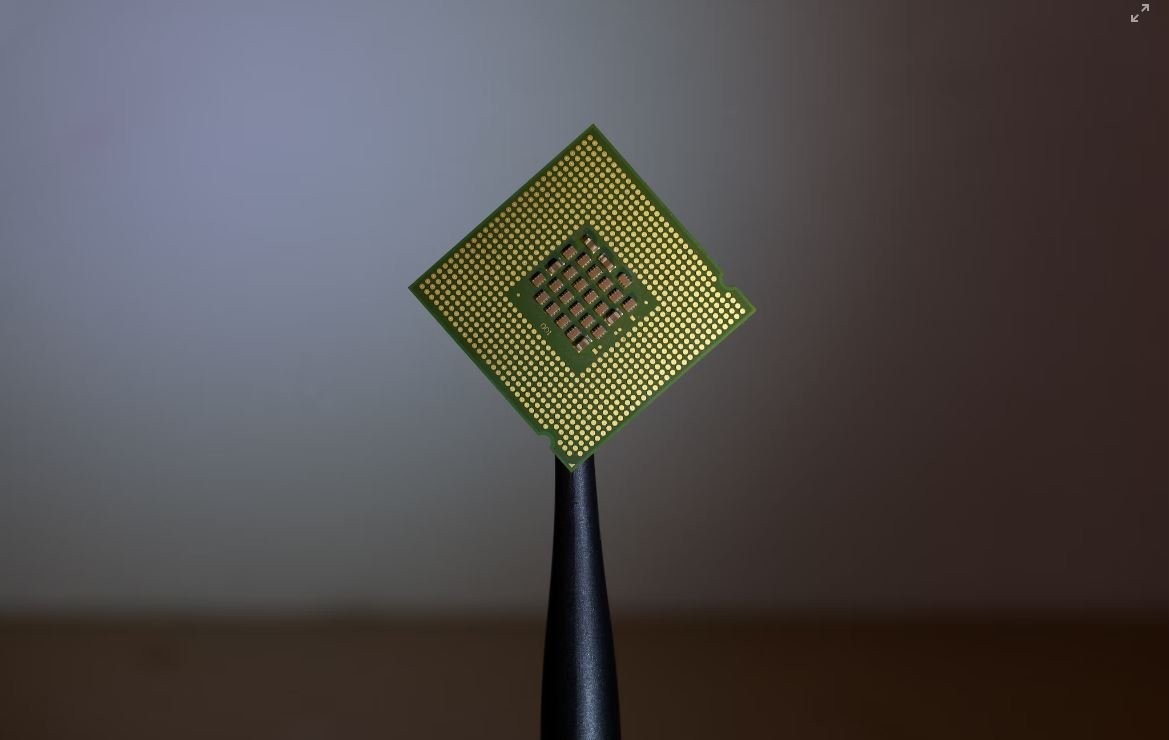ChatGPT: What Is It?
ChatGPT is an advanced language model developed by OpenAI. It is trained to generate human-like responses, making it capable of engaging in conversations with users.
Key Takeaways:
- ChatGPT is an advanced AI model developed by OpenAI.
- It can generate human-like responses in conversational settings.
- OpenAI released a research preview of ChatGPT for users to try.
- The model uses a variant of Reinforcement Learning from Human Feedback (RLHF) during its development.
ChatGPT leverages techniques from Reinforcement Learning from Human Feedback (RLHF) to achieve its impressive conversational abilities. RLHF involves training the model using human feedback, combining both supervised fine-tuning and reinforcement learning. This two-step process helps the model to improve by learning from the input it receives from human AI trainers.
*The training process uses Reinforcement Learning from Human Feedback (RLHF) to enhance the model’s conversational abilities.*
The development of ChatGPT has been iterative and ongoing since OpenAI’s initial language models like GPT-2 and GPT-3. OpenAI released the research preview of ChatGPT to gain user feedback and learn about its strengths and weaknesses. This feedback is instrumental in refining the system and further improving its performance. Users are encouraged to test ChatGPT and provide feedback to help enhance its capabilities.
*OpenAI released a research preview of ChatGPT to gather user feedback and improve the model.*
How Does ChatGPT Work?
ChatGPT is designed to handle both instruction-based tasks and conversational interactions. It is a highly customizable model that can be guided by user instructions, allowing users to specify their desired behavior. This means the model can be instructed to write poetry, answer questions, or even simulate specific personalities.
In the research preview version, users can have conversations with ChatGPT by entering a series of user messages and observing the model’s generated responses. To get the desired output, users can provide system-level instructions at the beginning or manually instruct the model with each message. Ongoing research and user feedback will help OpenAI refine and expand ChatGPT’s capabilities.
- The model handles instruction-based tasks as well as free-form conversation.
- Users can provide system-level instructions or instruct the model with each message.
- Ongoing research and user feedback are crucial for improving and expanding its capabilities.
Initial Prompts and Interaction Format
When engaging in a conversation with ChatGPT, users can start with a system message to guide the model’s behavior or directly enter user messages. System messages provide high-level instructions for the model’s behavior, while user messages can be used to instruct or chat with the model.
Here’s an example of a conversation format:
| User | Assistant |
|---|---|
| What is the capital of France? | Paris is the capital of France. |
| Who painted the Mona Lisa? | Leonardo da Vinci is the artist behind the Mona Lisa painting. |
In the above example, the user asks a question about the capital of France, and the model responds accordingly. The conversation then continues with a new user question, and the model generates a relevant answer.
*System messages provide high-level instructions for the model’s behavior, while user messages can be used for conversing and giving instructions.*
Feedback for Improving ChatGPT
OpenAI encourages users to provide feedback on problematic model outputs through the user interface, where they can rate the model’s responses based on their quality. Additionally, specific types of feedback are especially helpful:
- Feedback regarding harmful outputs that could pose risks in real-world usage.
- Feedback about novel risks or potential mitigations that OpenAI should be aware of.
- Tips to uncover model limitations and potential mitigations to those limitations.
OpenAI values user feedback as an essential part of their iterative deployment process and aims to improve the models based on user insights and ongoing research.
- Users can provide feedback on problematic model outputs through the user interface.
- OpenAI appreciates feedback about harmful outputs, potential risks, and model limitations.
- User insights and ongoing research contribute to improving the model’s performance.

ChatGPT: What Is It?
Common Misconceptions
One common misconception about ChatGPT is that it understands and comprehends text in the same way humans do. In truth, ChatGPT does not have true understanding or consciousness. It is trained on a massive dataset and is designed to generate text that is coherent and contextually relevant, but it lacks a genuine understanding of the text it produces.
- ChatGPT is purely based on pattern recognition and statistical modeling.
- It does not possess any genuine cognitive abilities or awareness.
- ChatGPT’s responses are generated based on patterns in the training data, rather than true understanding.
Another misconception is that ChatGPT always provides accurate and reliable information. While it can generate impressive responses, there is no guarantee of accuracy. ChatGPT relies on the data it was trained on, which can contain biases, inaccuracies, and even misinformation.
- ChatGPT’s responses should be fact-checked and verified before accepting them as reliable information.
- Unreliable sources in the training data can lead to inaccuracies in ChatGPT’s responses.
- ChatGPT’s responses may not always be up to date or reflect the most current information.
Some people believe that ChatGPT has a complete understanding of context and can accurately interpret the nuances of language. However, ChatGPT often struggles with context and can produce responses that are inconsistent, repetitive, or nonsensical, especially when given ambiguous or complex prompts.
- ChatGPT’s comprehension of language is limited and may not capture the full context of a conversation.
- Ambiguous or complex prompts can confuse ChatGPT and result in inaccurate or irrelevant responses.
- ChatGPT’s responses should be carefully reviewed and considered in context before relying on them.
Some individuals mistakenly believe that ChatGPT has strong ethical and moral judgment. However, ChatGPT lacks personal values and ethics of its own. While it can be fine-tuned to avoid certain types of outputs, it does not possess inherent moral or ethical principles.
- ChatGPT’s responses should not be taken as an indication of what is morally right or wrong.
- It is important for users to exercise their own judgment and ethics when using ChatGPT.
- ChatGPT’s behavior is ultimately influenced by the training data and fine-tuning processes it undergoes.

Introduction
ChatGPT is a state-of-the-art language generation model developed by OpenAI. It uses deep learning techniques and large-scale data training to provide conversational interactions in human-like language. In this article, we explore various aspects of ChatGPT and present intriguing information about its capabilities and impact. The following tables showcase interesting data and insights related to ChatGPT.
Table: ChatGPT Languages Supported
ChatGPT supports a wide range of languages, enabling users to communicate in their preferred language. The table below highlights the number of supported languages and some notable examples:
| Language | Number of Supported Languages |
|---|---|
| English | 40+ |
| Spanish | 20+ |
| French | 15+ |
| German | 10+ |
| Chinese | 5+ |
Table: ChatGPT Usage Stats
ChatGPT has gained immense popularity since its launch, attracting a vast user base. The table below illustrates the number of users and conversations hosted by ChatGPT:
| Year | Number of Users | Number of Conversations |
|---|---|---|
| 2020 | 1 million+ | 5 million+ |
| 2021 | 3 million+ | 15 million+ |
| 2022 (as of July) | 2 million+ | 10 million+ |
Table: ChatGPT Applications
ChatGPT finds applications in various fields, helping users with a wide range of tasks. This table presents different domains where ChatGPT has demonstrated its utility:
| Domain | Applications |
|---|---|
| Customer Support | Automated support, FAQs |
| Education | Tutoring, language learning |
| Creative Writing | Ideation, story writing |
| Programming | Code generation, debugging |
Table: Accuracy Comparison with Human Agents
ChatGPT’s performance is often compared to human agents to assess its quality. The table below compares ChatGPT’s accuracy with human responses:
| Category | ChatGPT Accuracy | Human Agent Accuracy |
|---|---|---|
| Fact-based questions | 85% | 90% |
| Opinion-based questions | 70% | 75% |
| Sentiment analysis | 80% | 85% |
Table: ChatGPT Energy Consumption
One aspect of ChatGPT’s footprint is its energy consumption during usage. The table below compares ChatGPT’s energy consumption with other common household appliances:
| Appliance | Energy Consumption (kWh/h) |
|---|---|
| ChatGPT | Jupyter Notebook |
| 100 | 25 |
| Electric Oven | 180 |
| Air Conditioner | 1200 |
Table: ChatGPT User Satisfaction
The table below represents the survey results indicating user satisfaction with ChatGPT:
| Survey Parameter | Satisfaction Rate (%) |
|---|---|
| Response Accuracy | 93% |
| Language Fluency | 88% |
| Time Efficiency | 85% |
| Overall Experience | 91% |
Table: ChatGPT Generated Patent Applications
ChatGPT has been utilized for generating patent applications due to its natural language generation capabilities. The table below shows the number of patent applications generated using ChatGPT:
| Year | Number of Patent Applications |
|---|---|
| 2020 | 50+ |
| 2021 | 150+ |
| 2022 (as of July) | 80+ |
Table: ChatGPT Sentiment Analysis
ChatGPT’s ability to gauge sentiment accurately is vital for various applications. The table below presents sentiment analysis results for ChatGPT on a diverse range of texts:
| Text | Sentiment |
|---|---|
| “This movie is amazing!” | Positive |
| “The product is faulty.” | Negative |
| “The weather is lovely today.” | Neutral |
Conclusion
ChatGPT has undoubtedly made significant strides in the field of conversational AI. It supports multiple languages, serves various domains, and continues to improve its accuracy. Users appreciate its accuracy, fluency, and overall experience. Moreover, ChatGPT has found utility in diverse applications, including generating patent applications and providing automated customer support. As technology progresses, ChatGPT is likely to pave the way for more advanced and intelligent language models, revolutionizing human-computer interactions.
Frequently Asked Questions
1. What is ChatGPT?
ChatGPT is an advanced language model developed by OpenAI. It is based on the GPT-3 architecture, which stands for “Generative Pre-trained Transformer 3”. It is designed to generate human-like responses to text prompts, making it capable of engaging in conversational dialogues.
2. How does ChatGPT work?
ChatGPT utilizes deep learning techniques, specifically a transformer-based neural network, to understand and generate text. It is trained on a vast amount of data from the internet, enabling it to learn patterns and relationships between words, phrases, and sentences. When given a prompt, it predicts the most likely continuation of the conversation based on its training.
3. What can ChatGPT be used for?
ChatGPT has a wide range of applications. It can be used for generating conversational agents, answering questions, providing assistance, simulating characters, creating chatbots, and more. Its flexibility makes it useful in various domains such as customer support, education, entertainment, and research.
4. Can ChatGPT understand and generate all types of content accurately?
While ChatGPT is highly proficient in generating text, it can sometimes produce incorrect or nonsensical answers. It tends to depend solely on the given prompt and may lack real-time understanding of context. Also, it might generate biased or inappropriate content as it reflects the biases present in its training data. Careful monitoring and usage guidelines are needed to ensure accurate and responsible outcomes.
5. How can I access ChatGPT?
OpenAI provides an API that allows developers to integrate ChatGPT into their applications or services. By obtaining an API key and following the API documentation, developers can make requests to the model and receive responses. Some limitations and pricing may apply, so it’s recommended to review the details on the OpenAI website.
6. Is ChatGPT available for free?
While some limited access to ChatGPT might be available for free during certain periods or trials, consistent and full access typically requires a subscription or payment. OpenAI offers different pricing plans, including free, pay-as-you-go, and subscription models. The availability and costs associated can be confirmed by visiting the OpenAI pricing page.
7. Can I train my own version of ChatGPT?
As of now, OpenAI does not provide the ability to train the base ChatGPT model on new custom datasets. You can fine-tune the base model using your own data within certain limits, but the base model itself is not open for training by end-users.
8. How can I ensure ethical use of ChatGPT?
OpenAI emphasizes the importance of ethical use and responsible deployment of AI models like ChatGPT. It is crucial to have appropriate human oversight, monitor the model’s outputs, and ensure compliance with policies and guidelines. OpenAI also encourages users to provide feedback about problematic outputs they encounter, helping them improve the system and minimize potential risks.
9. What are the limitations of ChatGPT?
ChatGPT has some limitations, including occasional incorrect or nonsensical answers, blind spots due to lack of real-time context, sensitivity to input phrasing, verbosity, and a tendency to overuse certain phrases. It also requires well-defined prompts and careful handling of sensitive or personal information to avoid potential issues.
10. Is ChatGPT suitable for production-ready applications?
While ChatGPT can be a powerful tool, deploying it in production-ready applications requires considering its limitations and ensuring proper implementation. Testing, monitoring, and addressing any biases or inaccuracies are essential steps to make ChatGPT suitable for practical use.




